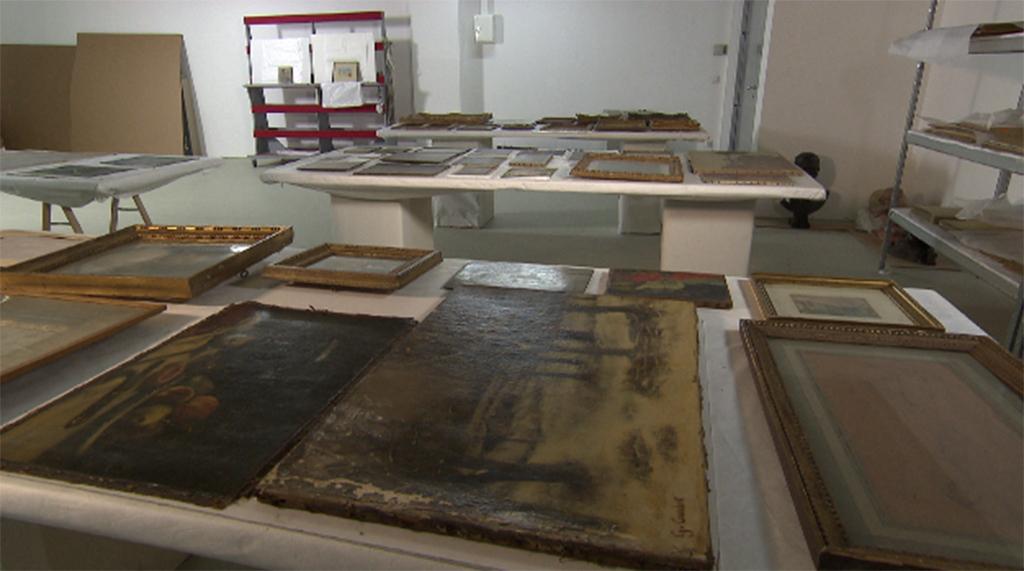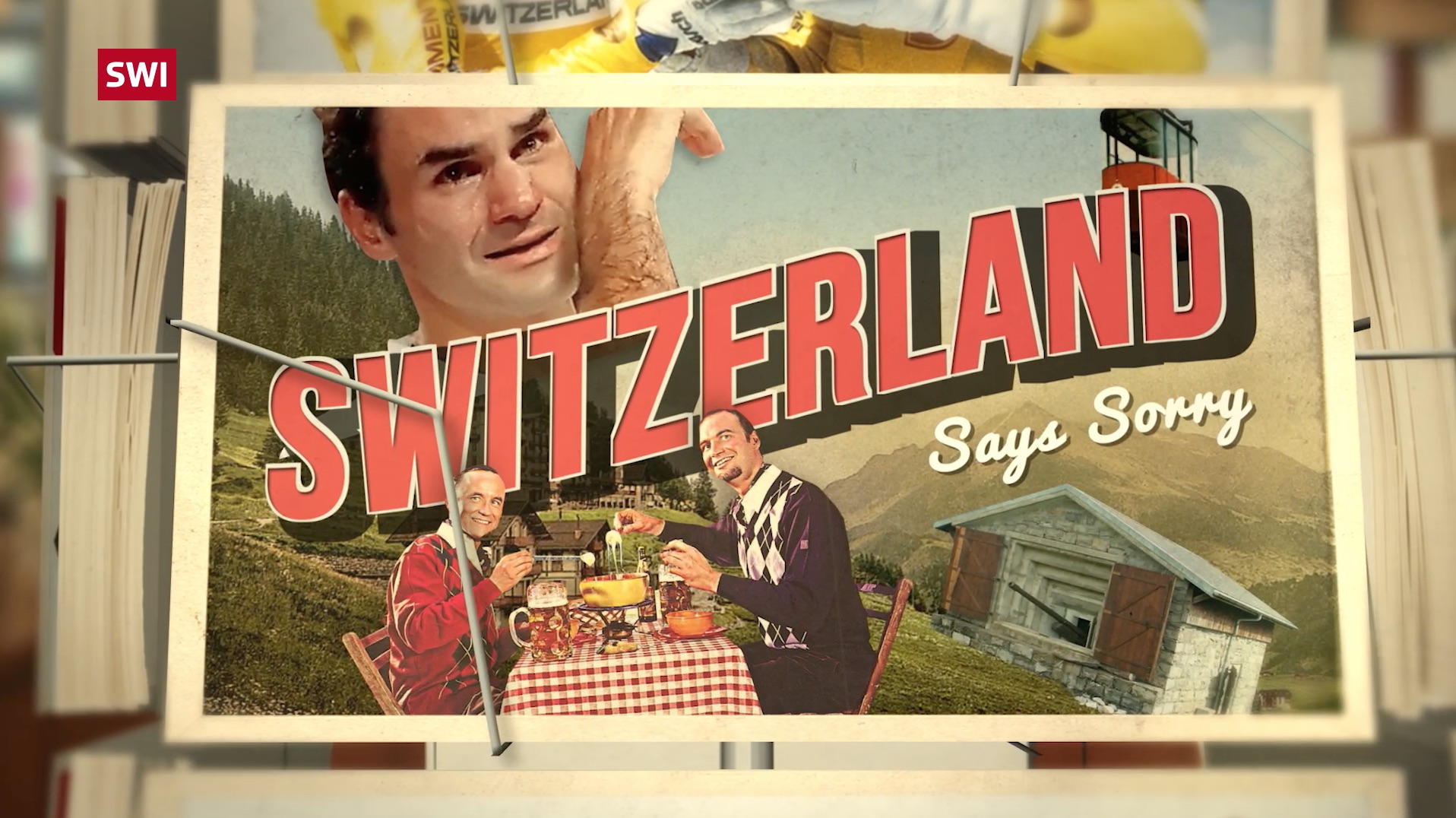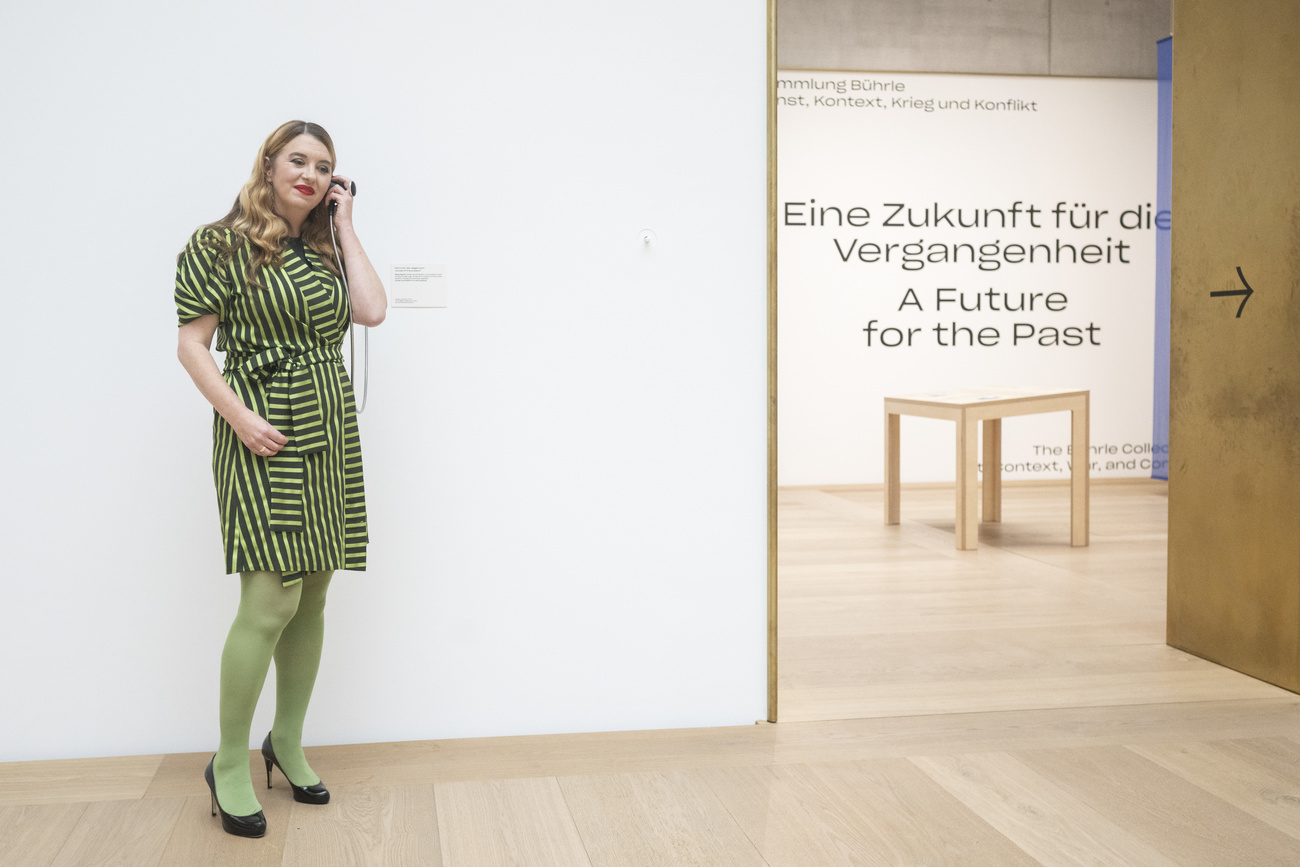Looted art: the woman tackling Switzerland’s historical burden

As Switzerland steps up its efforts to address looted art in public collections, Nikola Doll is set to play a central coordinating role. This month she starts work as the culture ministry official responsible for looted art in Switzerland.
When the reclusive Cornelius Gurlitt bequeathed his problematic art collection to the Kunstmuseum Bern, the Swiss capital’s museum of fine art, ten years ago, it created a new impetus in Swiss policy on Nazi-looted art that is still building. Nikola Doll has been a frontline witness to developments in her seven years leading research into the ownership history of Gurlitt’s art.
This month she began a new job at the Swiss culture ministry, where she is in charge of provenance research and looted artExternal link, encompassing both Nazi plunder and heritage acquired in a colonial context. She will also manage the administrative office of a new independent commission to adjudicate claims for disputed cultural property, to be created later this year, and a new internet platform for provenance research.
At the Kunstmuseum Bern, Doll headed the first museum department in Switzerland devoted to provenance research, a role she found “challenging and exciting from beginning to end”, she said in an interview with SWI swissinfo.ch. She added that she is “looking forward to the change of perspective” in her new post. “I’m also looking forward to extending my field of activity to colonial-era contexts,” she said.
Her appointment is evidence that, almost 80 years after the end of the Second World War, Switzerland has started taking its responsibilities for Nazi-looted art more seriously. The new independent commission fulfils a 25-year-old commitment under the international, non-binding Washington Principles to establish “alternative dispute resolution mechanisms for resolving ownership issues”.

Market hub for looted art
Switzerland was one of 44 countries to endorse the Washington Principles in 1998, agreeing to encourage museums to conduct provenance research, identify art seized by the Nazis, and seek “just and fair solutions” with the original Jewish collectors and their heirs. But for many years, there was not much Swiss government action.
While Austria, Germany, France, Britain and the Netherlands created commissions to evaluate restitution claims more than 20 years ago, museums in Switzerland were left to handle such claims themselves. Swiss officials argued that the country was never occupied by the Nazis and therefore not a major repository of looted art. Yet Switzerland served as a market hub for art from Germany before and during the war.

More
‘There’s a lot of Nazi-looted art in Switzerland’
“Bern’s decision to take on Gurlitt’s legacy led to a new discussion about looted art in Switzerland,” Doll said. “It brought momentum into this process.”
Gurlitt inherited his collection from his father, a dealer who worked for Adolf Hitler and whose purchases included artworks that had been confiscated from Jews or sold under duress. German customs authorities seized the collection in Gurlitt’s Munich apartment in 2012: when it became public in 2013, the hoard made headlines worldwide.

After his death in 2014, the foundation that runs the Kunstmuseum hesitated before accepting Gurlitt’s bequest, which it described as “a considerable burden of responsibility” entailing “a wealth of questions of the most difficult and sensitive kind”.
A matter of legal interpretation
Among these questions was how Swiss museums would respond to Bern’s handling of what in Switzerland is often termed “Fluchtgut” (flight assets) – art sold by Jews during the Nazi era to fund their escape or start new lives after losing their livelihoods and home. In Germany, such art sales are termed “losses due to persecution” and considered eligible for “just and fair solutions” with claimants. In Switzerland, claims for art sold under duress were often rebuffed.
“There was a danger that works in this collection that would be viewed as looted in Germany would not be viewed as looted in Switzerland,” Doll said. Both she and the director of the Kunstmuseum, Nina Zimmer, are German. “So if one museum in Switzerland started to evaluate works differently, that couldn’t be ignored.”
The question of Fluchtgut did indeed come to the fore. The Swiss official in charge of culture at the time, Isabelle Chassot, said the term was used in Switzerland alone and should be avoided. The Swiss government’s official position is that each case must be examined individually to determine whether a sale was “confiscatory”.

The Bührle conundrum
The Gurlitt case heralded a first shift in Swiss attitudes to Nazi-looted art and led to “more political sensitivity to the need for provenance research,” Doll said.
The government has funded provenance research since 2016: In the first round of funding, 12 projects were selected – in the latest round, it was 28, half for research relating to Nazi-looted art, and half for archaeological and colonial-era acquisitions. The canton of Bern began funding provenance research this year.
The additional funding has in turn led to an increase in the number of provenance researchers and available positions. Provenance researchers in Switzerland even founded their own associationExternal link in 2020.
But it was the outcry over Emil Georg Bührle’s collection that finally created the momentum for the government to create Doll’s post and a new commission. Bührle, an industrialist who sold weapons to Nazi Germany, is also known to have bought looted art.

More
Switzerland says sorry!
When his collection, on loan from the foundation he established to the Kunsthaus Zurich, was exhibited in a new extension to the museum in 2021, critics accused the foundation of whitewashing the provenance of some of the art on display and demanded an overhaul of the exhibition to better reflect the collection’s tainted history. An independent commission is due to report on the foundation’s provenance research this summer.

More
Bührle Collection: Ann Demeester on art, war, and context
A long-due mandate
In late 2021, the Social Democratic Party parliamentarian Jon Pult submitted a parliamentary motionExternal link calling for a new independent commission. “Switzerland would be making its contribution to addressing a dark chapter of history and living up to its responsibility in handling cultural property lost as a result of Nazi persecution,” he said.
The government is expected to appoint the panel’s members, who will number between nine and 12, later this year, Doll said. Its directiveExternal link stipulates that the commission will issue non-binding recommendations in disputes between claimants and current holders and will be able to call on outside experts in individual cases.
Claims will be submitted to the culture ministry, which will recommend them to the panel for consideration. The directive says that any artwork that is located in Switzerland or changed hands there is eligible for consideration. The commission’s remit covers both colonial-era heritage and Nazi-era losses.
Claimants are permitted to request an evaluation regardless of whether the current holder agrees, as long as they can demonstrate that they have undertaken provenance research and attempted to reach a settlement with the current holder.
New best practices
This means Swiss museums may come under renewed pressure to restitute or compensate art sold under duress, depending on how the new commission interprets international accords. Last month, 23 countries – including Switzerland – signed a new “best practices”External link agreement. Under these guidelines, intended to clarify ambiguities in the Washington Principles, any sale of art by a persecuted person between 1933 and 1945 “can be considered equivalent to an involuntary transfer of property”.
Switzerland’s decision to set up an independent commission has been welcomed internationally. In a March reportExternal link on nations’ progress in implementing the Washington Principles, the World Jewish Restitution Organization and Jewish Claims Conference put Switzerland in a category of countries that “have made substantial progress”. Seven countries were deemed to have made “major progress”.
After establishing a claims process, Switzerland “looks likely in the near future to join the countries at the top of the scale”, the report said.
Edited by Virginie Mangin and Eduardo Simantob


In compliance with the JTI standards
More: SWI swissinfo.ch certified by the Journalism Trust Initiative









You can find an overview of ongoing debates with our journalists here . Please join us!
If you want to start a conversation about a topic raised in this article or want to report factual errors, email us at english@swissinfo.ch.